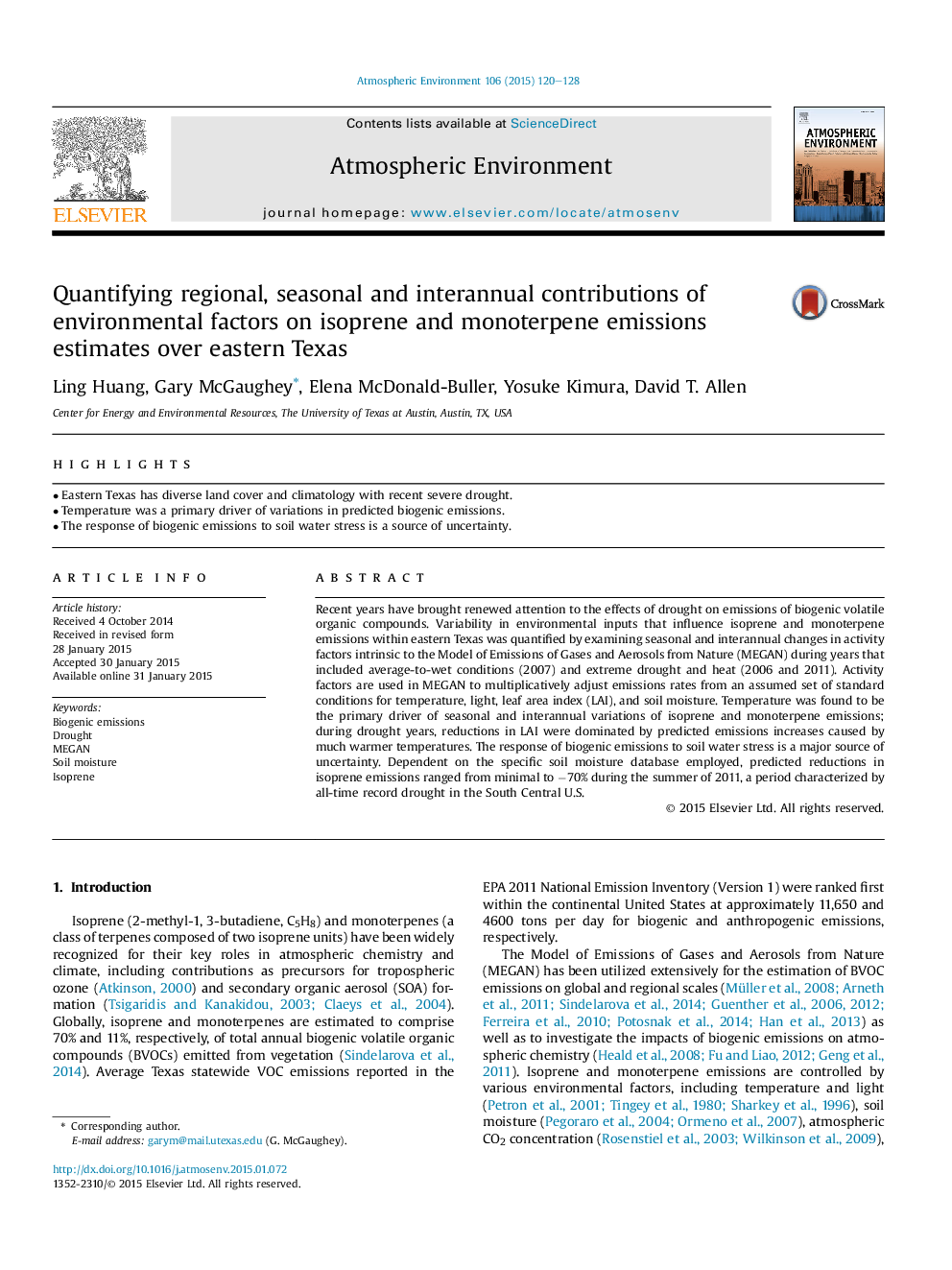| Article ID | Journal | Published Year | Pages | File Type |
|---|---|---|---|---|
| 6338281 | Atmospheric Environment | 2015 | 9 Pages |
Abstract
Recent years have brought renewed attention to the effects of drought on emissions of biogenic volatile organic compounds. Variability in environmental inputs that influence isoprene and monoterpene emissions within eastern Texas was quantified by examining seasonal and interannual changes in activity factors intrinsic to the Model of Emissions of Gases and Aerosols from Nature (MEGAN) during years that included average-to-wet conditions (2007) and extreme drought and heat (2006 and 2011). Activity factors are used in MEGAN to multiplicatively adjust emissions rates from an assumed set of standard conditions for temperature, light, leaf area index (LAI), and soil moisture. Temperature was found to be the primary driver of seasonal and interannual variations of isoprene and monoterpene emissions; during drought years, reductions in LAI were dominated by predicted emissions increases caused by much warmer temperatures. The response of biogenic emissions to soil water stress is a major source of uncertainty. Dependent on the specific soil moisture database employed, predicted reductions in isoprene emissions ranged from minimal to â70% during the summer of 2011, a period characterized by all-time record drought in the South Central U.S.
Related Topics
Physical Sciences and Engineering
Earth and Planetary Sciences
Atmospheric Science
Authors
Ling Huang, Gary McGaughey, Elena McDonald-Buller, Yosuke Kimura, David T. Allen,
